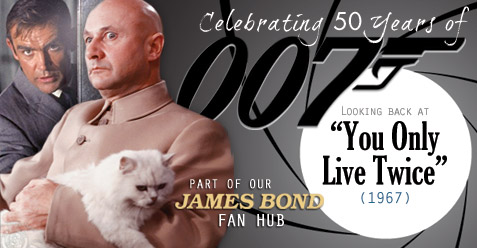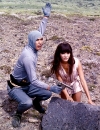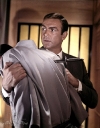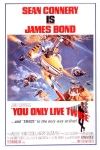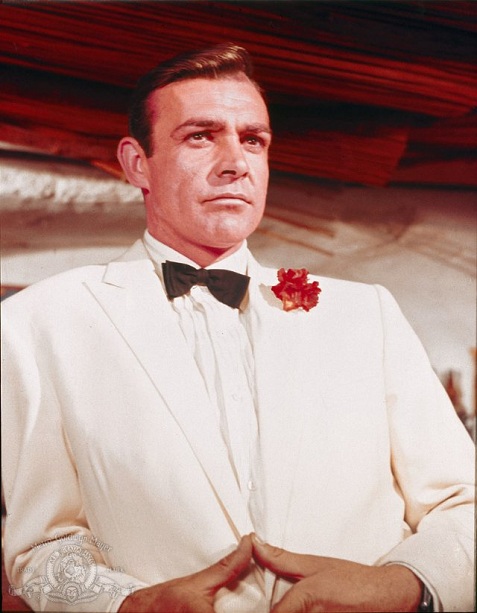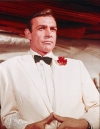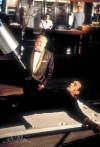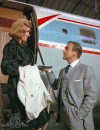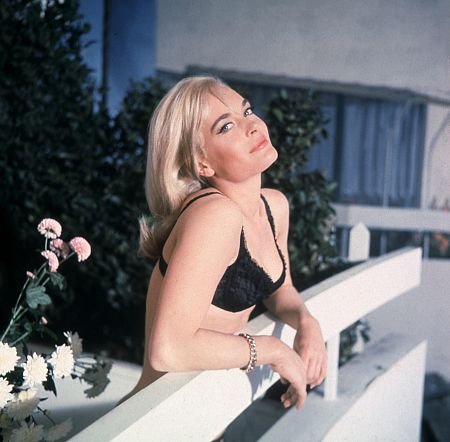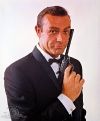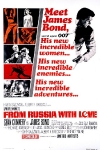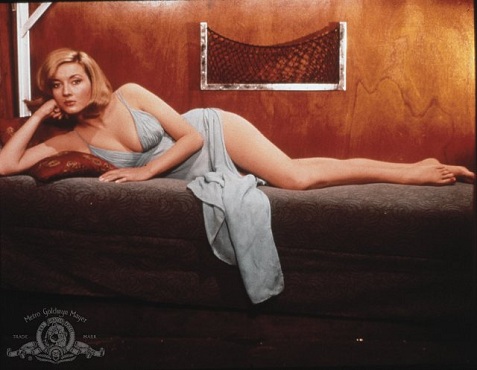007 One by One: ‘You Only Live Twice’
Bullz-Eye is celebrating the 50th anniversary of the first James Bond film with look back at every Bond movie, 007 One by One, along with a series of features about the Bond franchise, all laid out in our James Bond Fan Hub.
As the worldwide spy craze peaks, the James Bond series settles in for the long, tongue-in-cheek haul with this often maligned but very enjoyable entry, introducing the world to both ninjas and the original Dr. Evil. It also might have been the final appearance of Sean Connery as 007, except that it wasn’t.
“You Only Live Twice” (1967)
The Plot
A United States space capsule is hijacked, killing one astronaut. Naturally, the Americans assume the Soviets are at fault and world war seems a real possibility. There’s only one thing for the level-headed English to do: Stage James Bond’s death and send him on an undercover mission to Japan to expose SPECTRE head Ernst Stavro Blofeld’s plot to dominate the world by partially destroying it.
The Backstory
With enormous success comes enormous pressures and change was very definitely in the air as “You Only Live Twice” began production. Now one of the world’s most bankable stars after the mega-success of “Thunderball,” Sean Connery was contractually on board for only one more film and starting to be seriously fed up with all the 007 insanity.
Behind the camera, original Bond director Terrence Young had had his fill and “Goldfinger” helmer Guy Hamilton was unavailable. Editor and second unit director Peter Hunt, who had been instrumental in the series’ creative success, badly wanted to helm the project, but producers Albert “Cubby” Broccoli and Harry Saltzman apparently weren’t ready for a first timer for Bond #5. Therefore, a new recruit was sought out to join the small fraternity of James Bond directors.
An old hand at period pieces and war films, Lewis Gilbert was hot off an Oscar nomination for a classic-to-be about a compulsive womanizer who could give Bond a run for his money. “Alfie” starred Connery’s good friend, fellow movie spy, and now award-winning box office rival, Michael Caine.
Lewis Gilbert also brought along one of the very few directors of photography who could have reasonably stepped into the very big shoes of series regular Ted Moore. Freddie Young had won the first of his four Oscars a couple of years prior for David Lean’s visually stunning 1963 70mm masterpiece, “Lawrence of Arabia.” For the sake of keeping things consistent, all the other key collaborators, were back on board in their regular roles, i.e., composer John Barry, credit designer Maurice Binder, and production designer Ken Adam. For once, they’d all have a nice budget to play with, too.
The script, however, was an issue. The novel “You Only Live Twice,” was the last Bond book published in Ian Fleming’s lifetime and the story was problematic for more than one reason. For starters, it was actually the third and final installment in what literary Bond fans call “the Blofeld Trilogy.” EON’s original intent had been to film the books in their original order. That way Blofeld, who had been teased as a character starting in “Dr. No,” would get his long-delayed onscreen introduction in “On Her Majesty’s Secret Service” and finally suffer James Bond’s revenge in the follow-up, “You Only Live Twice.” Unfortunately, logistics made the ski chalet setting of “Majesty” impractical for the summer release EON and United Artists had their hearts set on.
The other problem was that the plot of Ian Fleming’s novel, which involved Blofeld setting up a lavish sanitarium for wealthy suicides, just didn’t seem to be the stuff of a James Bond movie. It also ended with Bond fathering a child with Kissy Suzuki. Only a few elements from the book would remain in the finished movie, most notably the Japanese setting, love interest Kissy, and friendly spy boss Tiger Tanaka.
There was also a problem with finding a writer. Richard Maibum, who had worked on every Bond up to this point, was deemed unavailable. A rumored screenplay by renowned author Kingsley Amis had been reportedly dismissed. Another script was commissioned by writer Harold Jack Bloom, but little of his work would remain in the finished film.
The final choice of screenwriter turned out to be an interesting one. Decades after his death, Roald Dahl remains one of the world’s most popular children’s writers with such film-friendly classics as “Charlie and the Chocolate Factory,” “Fantastic Mr. Fox,” “The Witches,” “Matilda,” and “James and the Giant Peach” all too his credit. He might have seemed a far likelier choice for writing an adaptation of Ian Fleming’s children’s book, “Chitty Chitty Bang-Bang,” the gig that was apparently keeping Richard Maibum busy. Nevertheless, Dahl had written his share of adult thrillers and had actually performed wartime espionage and been friends with Fleming. Scads of 007-inspired spy spoofs were upping the humor ante and this would be a somewhat more tongue-in-cheek Bond. Dahl’s dark sense of humor would be a plus.
The main thrust of the film’s new plot was apparently invented by Cubby Broccoli, however. Upon seeing a dormant volcano while scouting locations, he came up with the idea of using it as a giant villain’s lair. With the U.S.-Soviet space race at full swing, the Russian-Chinese split a topical news item, and terrorism on the rise, the idea of SPECTRE hijacking spacecrafts in order to start a world war on behalf of Red Chinese clients seemed like a natural.
The Bond Girls (Rule of 3 + 1)
Once again, 007 does the espionage nasty with three beautiful women on his Japan adventure. Shockingly, however, the movie’s main love interest is not one of them.
Ling (Tsai Chow) — This lovely lady of Hong Kong engages in mildly racist pillow talk with Bond and then reveals herself to be an accomplice in the spy’s elaborately faked death. Though her part is small, actress Tsai Chow was already a recording artists and a major star of the London stage in “South Pacific” and “The World of Suzie Wong.” Her very long film career would include parts in “The Joy Luck Club,” “Memoirs of a Geisha,” and the 2006 Bond reboot, “Casino Royale.”
Helga Brandt (Karen Dor) — The latest Bond villainess with preying mantis-like tendencies, the dangerous Ms. Brandt is the secretary/in-house assassin of the wealthy SPECTRE operative, Mr. Osato. She has her way with Bond, then fails at killing him. It’s only natural that she winds up a victim of SPECTRE’s signature approach to personnel management, which in her case means being fed to the CEO’s pet piranhas. Actress Karen Dor has enjoyed a very long career in German films and television that continues to this day. She also appeared in Alfred Hitchcock’s unsuccessful spy thriller, “Topaz,” and the modestly titled horror flick, “The Torture Chamber of Dr. Sadism.”
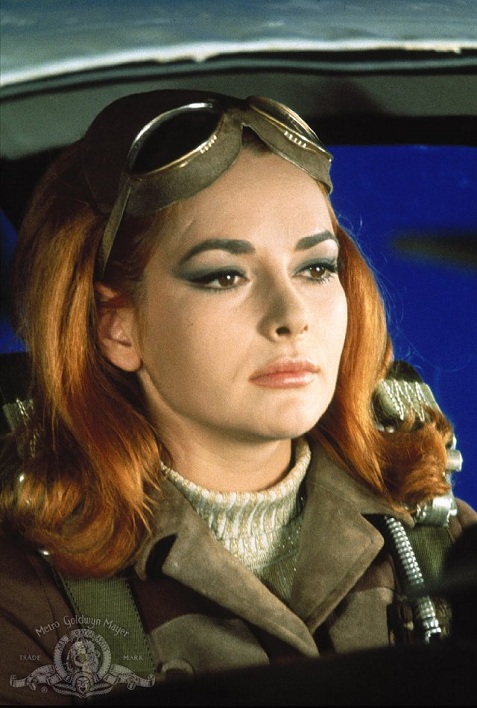
You can follow us on Twitter and Facebook for content updates. Also, sign up for our email list for weekly updates and check us out on Google+ as well.
Posted in: Entertainment, Movies
Tags: 007, 007 50th anniversary, 007 films, 007 gadgets, 007 guns, 007 movies, 007 One by One, 007 villains, Aki, Akiko Wakabayashi, beautiful Bond women, Bernard Lee, best Bond movie moments, Bond babes, Bond films, Bond gadgets, Bond girls, Bond movies, Bond one by one, Bond villains, Burt Kwouk, Charles Gray, classic Bond gadgets, Desmond Llewelyn, Dikko Henderson, Donald Pleasence, Dr. Evil, Ernst Stavro Blofeld, Freddie Young, Hans, Helga Brandt, helicopter, iconic James Bond moments, James Bond, James Bond 007, James Bond 50th anniversary, James Bond actresses, James Bond babes, James Bond blog, James Bond craze, James Bond drinks, James Bond franchise, James Bond girls, James Bond guns, James Bond henchmen, James Bond movies, James Bond music, James Bond nemesis, James Bond villains, James Bond violence, John Barry, Karen Dor, Ken Adam, Kissy Suzuki, Lewis Gilbert, license to kill, Ling, Little Nellie, Lois Maxwell, M Bond, Maurice Binder, memorable Bond scenes, Michael Chow, Mie Hama, Moneypenny, Mr. Osato, Nancy Sinatra, Ninja cigarettes, Q Bond, Roald Dahl, Ronald Rich, Sean Connery, SPECTRE, SPECTRE #3, SPECTRE #4, supervillains, Teru Shimada, Tetsurō Tamba, Tiger Tanaka, Tsai Chow, villain's lair, Walther PPK, water-proof sarcophagus, You Only Live Twice




